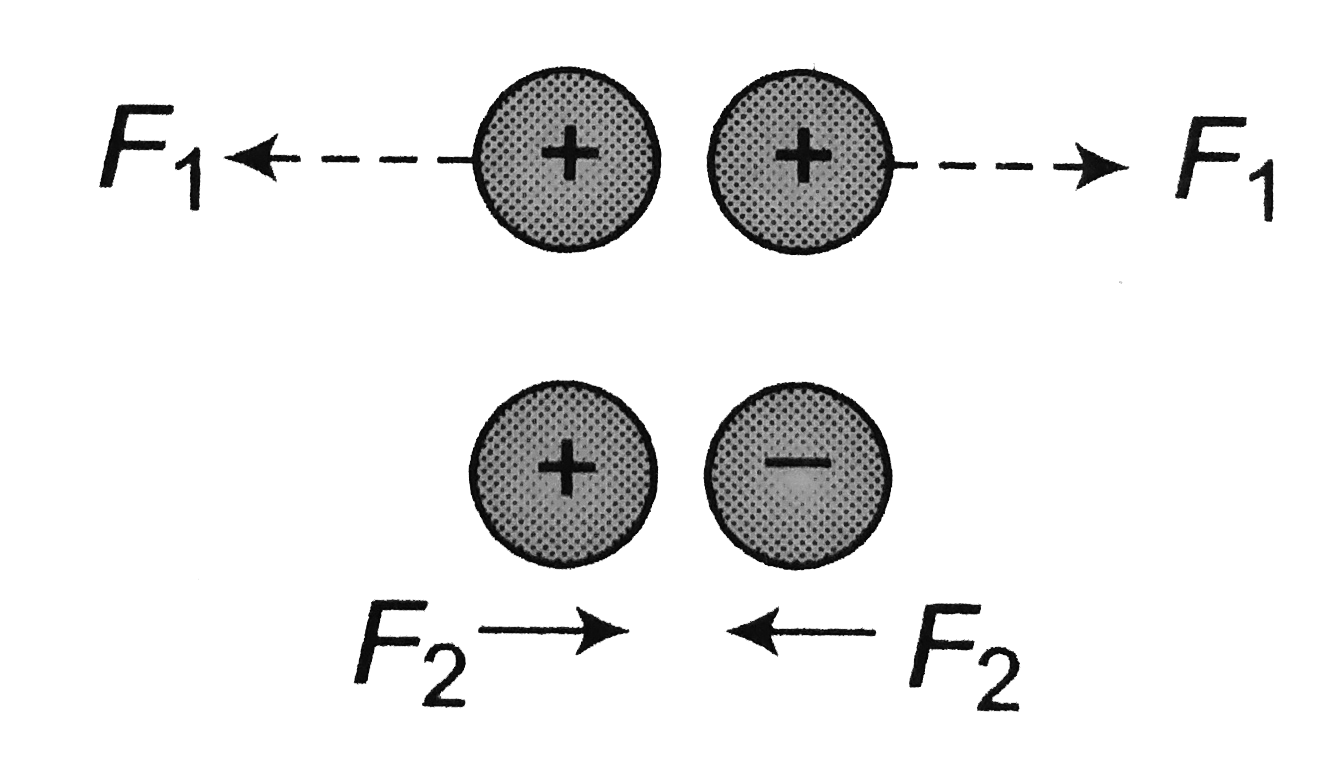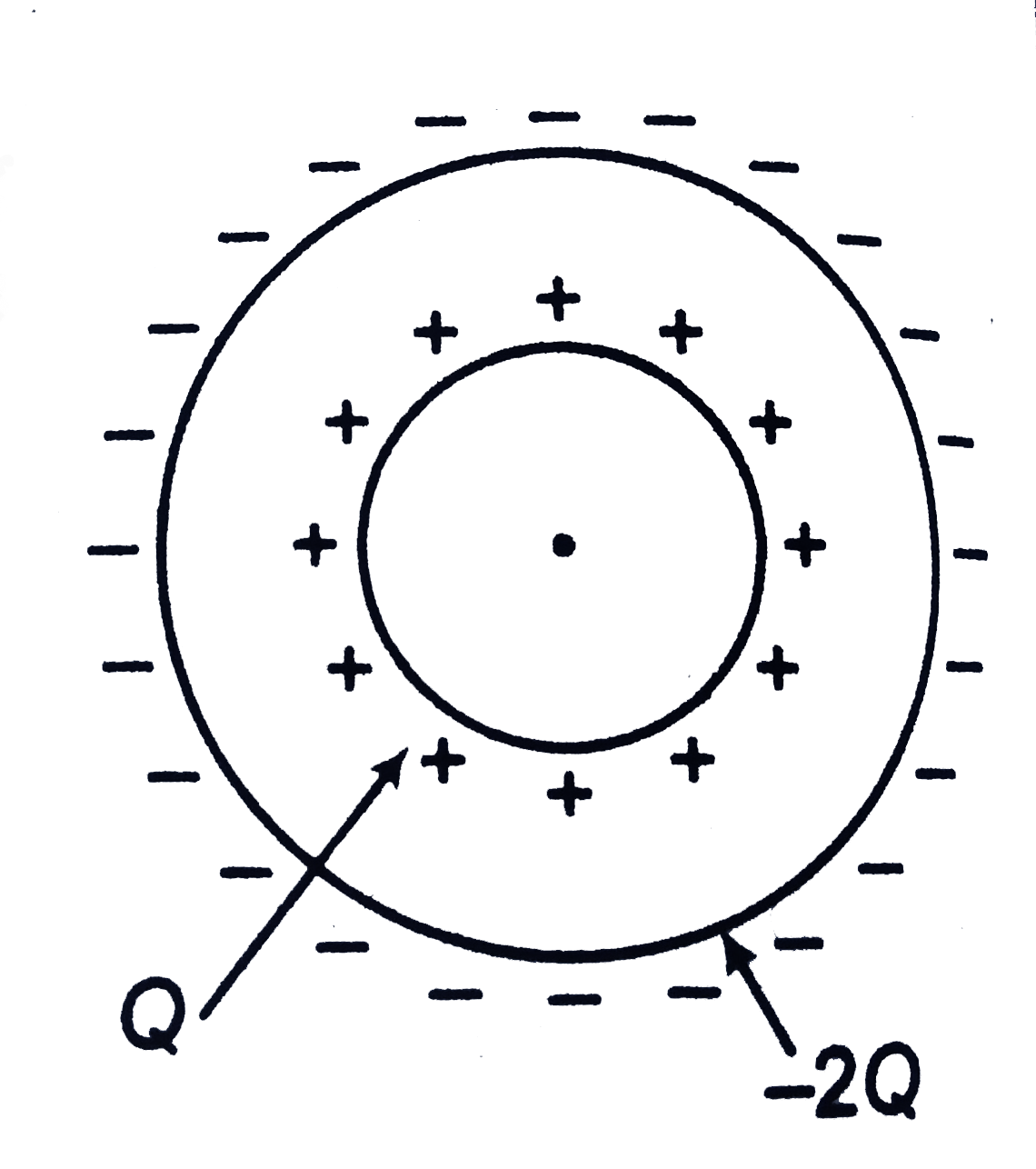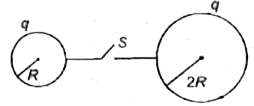In two cases, two identical conducting sphere are given equal charges, in one case of the same type whereas in another case of opposite type. The distance between the spheres is not large comparing with the diameter. Let F1 and F2 be the magnitudes of the force of interaction between the spheres, as shown, then

F1>F2
F1=F2
F1<F2
information is not sufficient to draw the conclusion
The correct Answer is:C
Step by step video & image solution for In two cases, two identical conducting sphere are given equal charges, in one case of the same type whereas in another case of opposite type. The distance between the spheres is not large comparing with the diameter. Let F_(1) and F_(2) be the magnitudes of the force of interaction between the spheres, as shown, then by Physics experts to help you in doubts & scoring excellent marks in Class 12 exams.
Updated on:21/07/2023Topper's Solved these Questions
- COULOMB LAW AND ELECTRIC FIELDBOOK - CENGAGE PHYSICS ENGLISHCHAPTER - COULOMB LAW AND ELECTRIC FIELDEXERCISE - Multiple Correct Answers Type
2 Videos
- COULOMB LAW AND ELECTRIC FIELDBOOK - CENGAGE PHYSICS ENGLISHCHAPTER - COULOMB LAW AND ELECTRIC FIELDEXERCISE - Comprehension Type
2 Videos
- COULOMB LAW AND ELECTRIC FIELDBOOK - CENGAGE PHYSICS ENGLISHCHAPTER - COULOMB LAW AND ELECTRIC FIELDEXERCISE - Integer
8 Videos
- CENGAGE PHYSICS DPPBOOK - CENGAGE PHYSICS ENGLISHCHAPTER - CENGAGE PHYSICS DPPEXERCISE - subjective type
51 Videos
- ELECTRIC CURRENT & CIRCUITSBOOK - CENGAGE PHYSICS ENGLISHCHAPTER - ELECTRIC CURRENT & CIRCUITSEXERCISE - Kirchhoff s law and simple circuits
15 Videos
Similar Questions
Two concentric conducting spheres of radii R and 2R are crrying charges Q and −2Q, respectively. If the charge on inner sphere is doubled, the potetial differece between the two spheres will

View SolutionTwo equally charged, indentical metal spheres A and B repel each other with a force F. The spheres are kept fixed with a distance r between them. A third identical, but uncharged sphere C is brought in contact with A and removed. The magnitude of the net electric force on A is
View Solution
Knowledge Check
The electrostatic attracting froce on a small sphere of charge 0.2μC due to another small sphere of charge −0.4μC in air is 0.4N. The distance between the two spheres is
A43.2×10−6mB42.4×10−3mC18.1×10−3mD19.2×10−6mTwo identical spheres of radius R made of the same material are kept at a distance d apart. Then the gravitational attraction between them is proportional to
Ad−2Bd2Cd4Dd
Two conducting spheres, each given a charge q are kept far apart as shown. The amount of charge that crosses the swithc S1 when it is closed , is ( the connection between the spheres is conducting

View SolutionConsider two solid dielectric spheres of radius a, separated by a distance R(R>>a). One of the spheres has a charge q, and the other is neutral (see figure). We double the distance between two sphere. How much charge should reside on the first sphere now so that the force between the spheres remains the same ?

View SolutionForce between two conducting large plates , with charges Q and Q2 as shown in the figure, is (Area of each face of plate =A)
_PHY_E01_022_Q01.png)
View SolutionThe centres of two identical small conducting spheres are 1m apart. They carry charge of opposite kind and attract each other with a force F. When they are connected by a conducting thin wire they repel each other with a force F/3. What is the ratio of magnitude of charge carried by the sphere initially ?
View SolutionTwo identical small conducting spheres having unequal positive charges q1 and q2 are separated by a distance r. If they are now made to touch each other and then separated again to the same distance, the electrostatic force between them in this case will be
View SolutionTwo identical small conducting spheres having unequal positive charges q1 and q2 are separated by a distance r. If they are now made to touch each other and then separated again to the same distance, the electrostatic force between them in this case will be
View Solution
